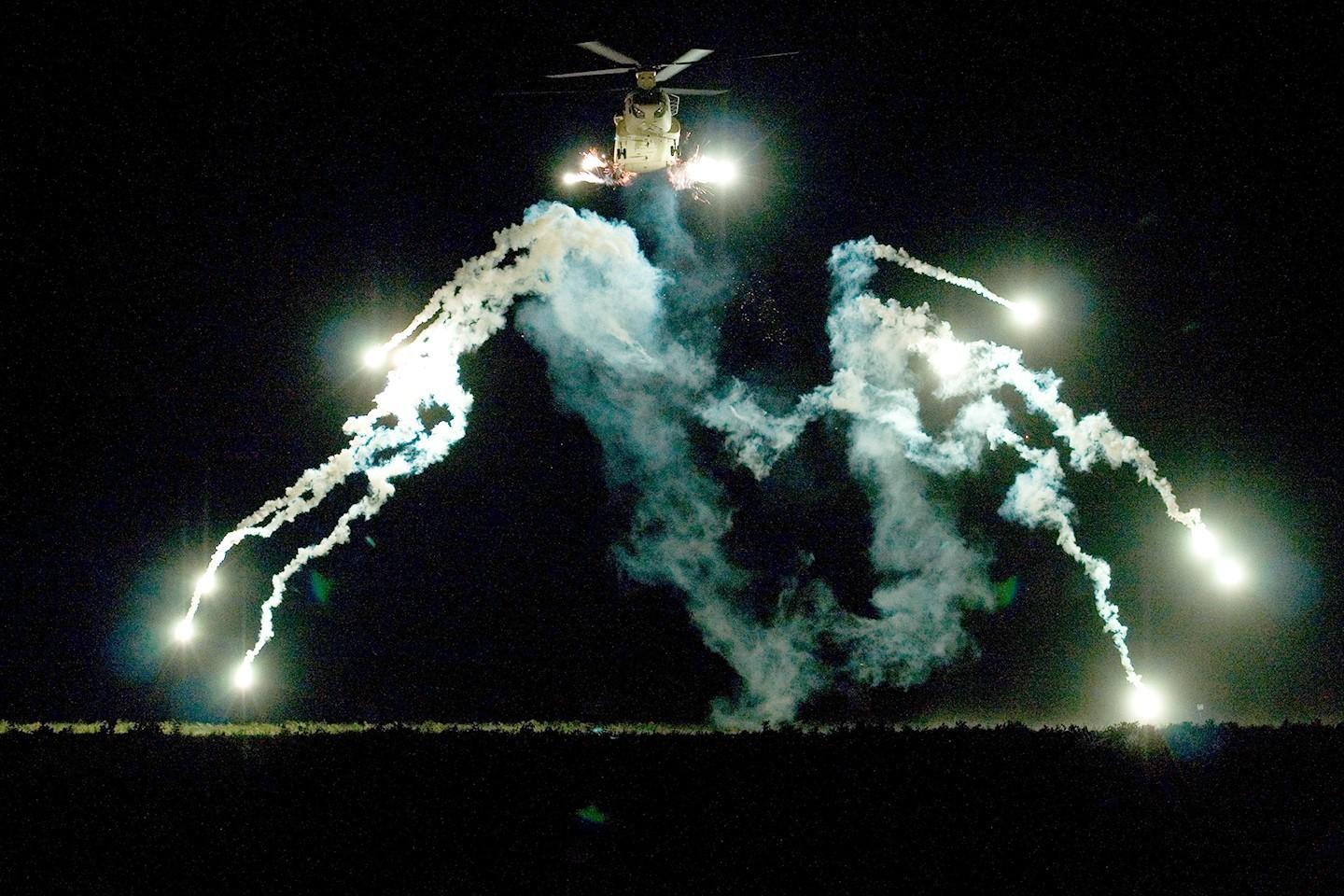
A CH-47 Chinook releases flares during a nighttime exercise.
Northrop Grumman wants to start experimenting with a new software application that is designed to steer the U.S. Army’s Future Vertical Lift (FVL) fleet through holes in an enemy’s advanced air defenses by stitching together threats detected by multiple onboard and offboard sensors.
The U.S. Army awarded Northrop a research and development contract in May 2020 to start working on the Survivability Against Integrated and Networked Threats (SAINT) software tool. (Lockheed Martin received a similar contract four months later to develop a competing version.) The technology is now ready to advance to flight demonstrations, Brendan Kelly, Northrop’s director of Vertical Lift and Ground, told reporters Oct. 11 at the Association of the U.S. Army’s annual meeting in Washington.
“We’re working to get it out to some demonstration space and show the operational value as quickly as possible,” Kelly said.
In a demonstration staged for reporters, the SAINT tool received and fused data from multiple federated sensors onboard an FVL aircraft. The sensors included Northrop’s Athena missile warning system, APR-39(V)2 digital radar warning receiver and Raptor radar. Offboard sensor data also was fed into a processor running the SAINT application.
Although the demonstration used only Northrop sensors, Kelly said the SAINT could be used with any sensor that complies with the standards being established by Army’s FVL Enterprise Architecture Framework.
Using the sensor data, the SAINT application identified a threat in the flight path of the FVL aircraft, then recommended a flight path change to the flight crew, Kelly said. The tool also orchestrated the rescheduling of loiter times for air-launched affects and the timing of suppression-of-enemy-air-defense operations, which were affected by the FVL aircraft’s flight path change to avoid the threat.
The tool is designed to help future FVL crews survive in airspace defended by networked air defenses, but is not foolproof against lesser threats. During the demonstration, the FVL aircraft’s new routing allowed it to avoid an advanced surface to air missile threat, but the aircraft instead flew into an area defended by man-portable air defense systems, which fire heat-seeking missiles. The FVL aircraft used flares dispensed by the Common Infrared Countermeasures systems to defeat the incoming missile.
